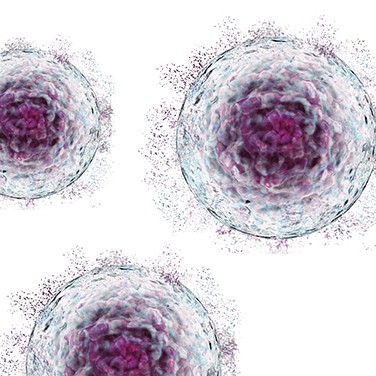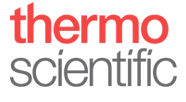Equipment Challenges in Scaling Up Cell Therapy Processes
By Mary Kay Bates, Brian McBride, and Molly Love Parrucci
As proteomics, genomics, and cell-based sciences have developed over several decades, the pace of transition for academic discoveries to applied research and eventual commercialization has increased significantly.
It’s an exciting time to be part of this unprecedented growth, with new medical applications targeting previously untreatable diseases. As of February 2020, there are nine approved cell or gene therapies,1 with dozens more in clinical trials. And as of July 2020, 95 monoclonal antibodies are approved by the U.S. Food and Drug Administration (FDA).2
Transition from the Bench
Many new therapies use stem cells, immune cells, or other very sensitive cells. Especially precious are cells cultured for autologous therapy, where the patient-specific cells themselves become the treatment. In such treatments, the integrity of methods and equipment for culturing, processing, and storing cells is even more critical. As these methods move to larger-scale production, materials and equipment become key to ensuring cellular integrity, uniformity, yield, and contamination risk control.
Taking a discovery from academia to the commercial market has been a historically difficult process, but new resources can help. By first addressing your procedures, reagents, and equipment, you may ease the transition and reduce some of the many challenges associated with current good manufacturing practices (cGMP) and audited processes. This article offers some guidance on making the transition a success.
Develop Your Process
Choose trusted laboratory suppliers that offer equipment that can help you move from the academic lab to startup and production. There is a lot to consider, so ask the following questions:
- How reliable is the equipment manufacturing and testing?
- Does the factory comply with ISO 13485?
- Do product claims match performance?
- Are critical steps in your process easy to set up, use, maintain, and control?
- Is technical support and service available? Are service personnel trained and qualified for your specific equipment and knowledgeable about your procedures?
A More Holistic Approach
As you transition to production, additional considerations apply. Think about the design and operation of equipment from both a research and a production perspective. Can your equipment make the transition? Will you need to requalify at each step?
For an example of this exercise, consider a CO2 incubator. In the lab, key features include contamination control, a consistent and uniform environment, and fast open-door recovery. But new factors arise for pilots and production transitions, including cleanability, data management, documentation, capacity, and ergonomics. Can the supplier provide factory acceptance test (FAT) document and validation services? Selecting products that meet your needs throughout the process affords a more rapid transition between stages with lower risk.
Biological safety cabinets (BSCs) pose similar challenges. Their operation is more than just specifications — it’s about how well performance meets those specifications. It’s not just about HEPA filtration, but also about how the airflow is driven and directed through those HEPA filters to keep you safe and protect the integrity of your work, even over hours of continuous operation and months of filtration. How well your BSCs operate in the working environment and surrounding airflow requirements should also be part of your decision process.
Evaluating centrifuges also illustrates these critical transition concerns. A research lab focuses on ease of use, biocontainment, and rotor choice. In production environments, the focus shifts to capacity, disinfectant compatibility, automation, and data management. Does the supplier offer FAT documentation and installation, operation, and performance qualification (IQ/OQ/PQ) services? Select a centrifuge from a supplier that serves both research and production to help smooth the path to scale up and avoid buyer’s remorse.
Controlled cooling and storage of the final cellular product is another key scale-up consideration. Many cell and gene therapy processes require greater control of cellular cooling rates. This may include special manipulation to minimize the detrimental effects of undercooling and the heat liberated during the change from water to ice. The ultimate stability of frozen cells requires their maintenance at temperatures below -130˚C and will affect the storage duration after which the materials can be safely recovered.
Key criteria for cold storage equipment include temperature range, temperature accuracy, and data output. Pilot and production users should also consider programmability, cleanability, and service support. Validation, monitoring, and ready availability of cGMP documents, including FAT and IQ/OQ/PQ protocols, are critical for cold storage equipment compliance.
Supplier cGMP Capabilities
Understanding your suppliers’ capabilities is a top priority in this changing environment. These conversations need to occur long before expansion plans are made.
A supplier should be able to help you adapt as you move along the product development path. Their expertise should include bench-scale considerations and production of cells as therapies. More critical questions include:
- How well do they understand cGMP requirements?
- Do they offer the documentation needed for all qualification steps?
- Is technical data readily available?
- Are onsite services an option?
Manufacturers can usually provide IQ/OQ/PQ support because they know their product best. Ask your vendors about service support and onsite validation capabilities to gain insight about the level of support you can expect from them.
Consider the future demands which may be placed upon the laboratory equipment you purchase for your research work. By thinking about the long-term use of equipment, reagents, and other lab products, you can meet regulatory requirements, shorten timelines, and hit every milestone.




